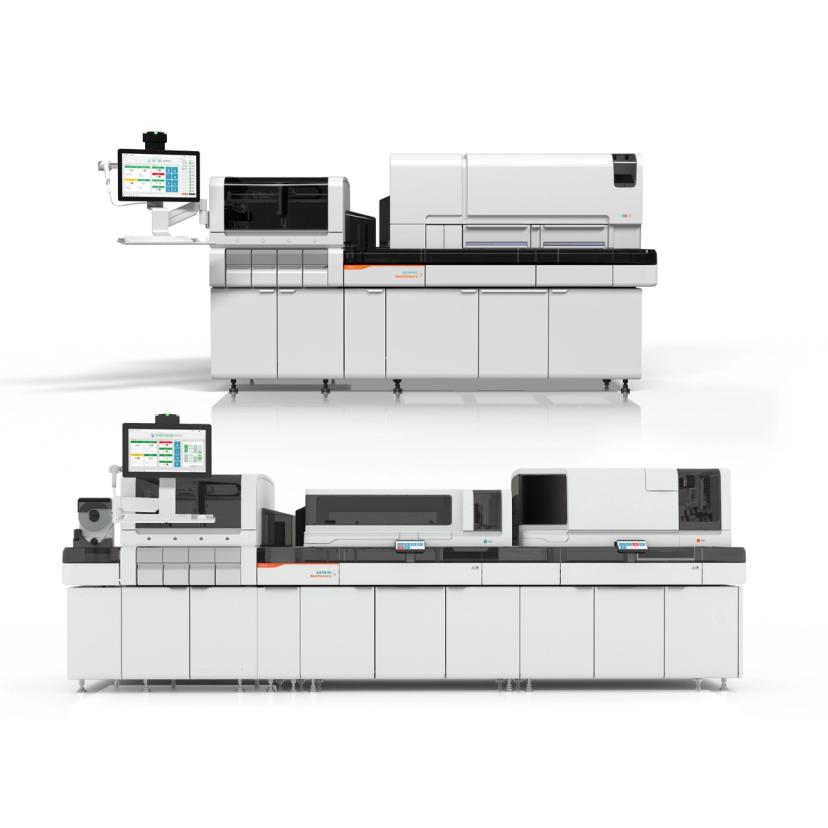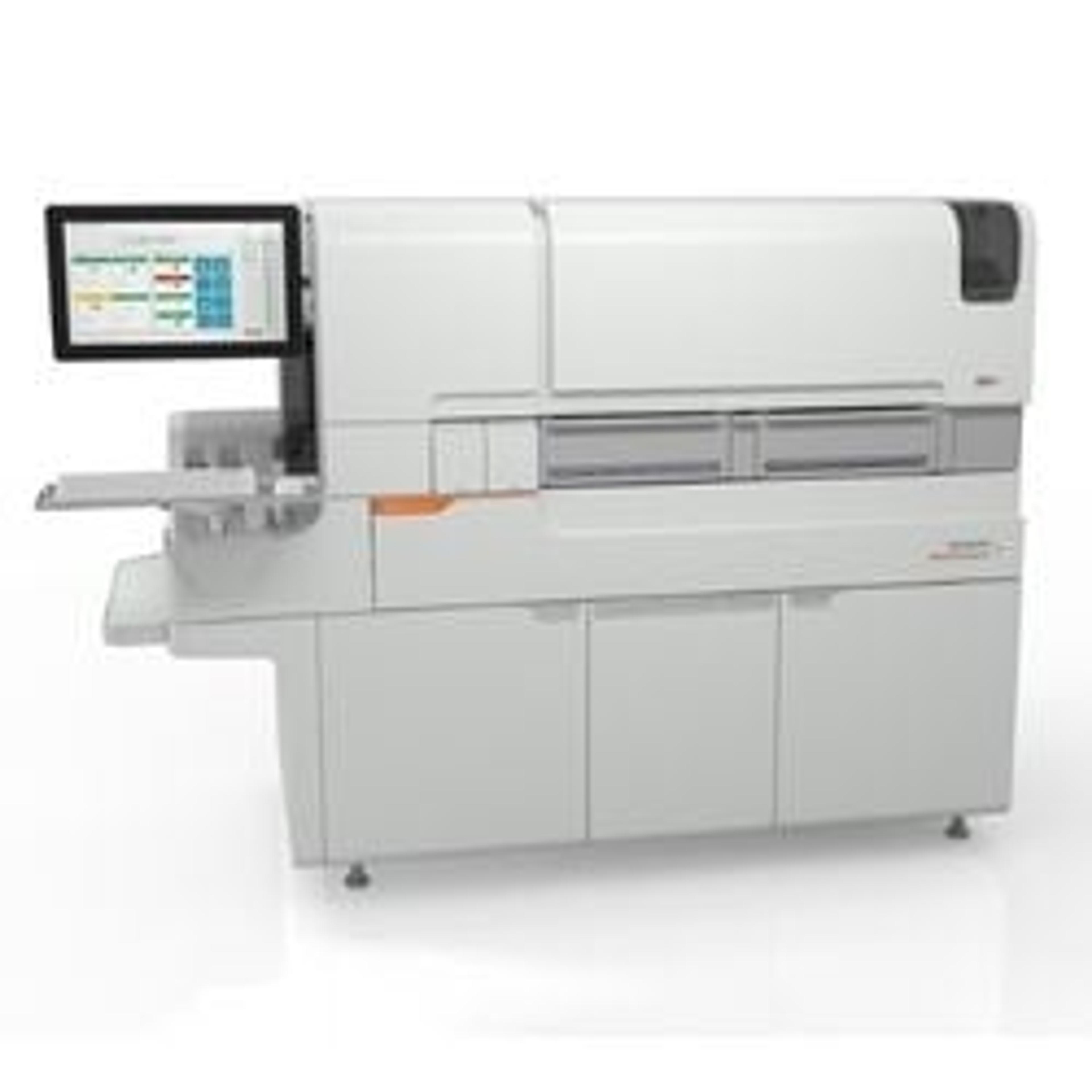Siemens Healthineers debunks myths around clinical lab automation
Discover how Siemens Healthineers is breaking down barriers and making automation more accessible, efficient, and beneficial for clinical labs of all sizes
25 Nov 2024
Laboratories across the world are under a great deal of pressure to keep up with rising demands. Despite the clear advantages that automation offers — such as improving efficiency, reducing errors, and freeing staff from repetitive tasks — many lab professionals remain hesitant. Misconceptions about the cost, complexity, and potential job losses associated with automation have led some to believe that this level of optimization is beyond their reach.
With decades of expertise in automation, Siemens Healthineers is addressing these concerns head-on. By offering tailored, accessible solutions, it is helping clinical labs of all sizes transition to automation, enabling staff to focus on meaningful, human-centered work.
Myths surrounding automation continue to hold some labs back.
Eckart Thies Head of Automation Marketing, Siemens Healthineers
Mounting challenges amid workforce shortages

Eckart Thies, Head of Automation Marketing, Siemens Healthineers
The clinical lab environment is changing rapidly. Eckart Thies, Head of Automation Marketing at Siemens Healthineers, highlights the growing pressure on laboratories due to several key factors, including consolidation, staff shortages, and the rising demand for more tests with greater accuracy.
In a recent interview with SelectScience®, Thies explains, "there is a lot of consolidation taking place. Many of our lab customers are reporting that 10% to 25% of positions remain unfilled, and the situation is likely to worsen as another wave of retirements is expected in the near future, further exacerbating staffing challenges."
The combination of increasing workloads and staff attrition makes automation not just a convenience, but a necessity. Despite this recognition, Thies says, “Myths surrounding automation continue to hold some labs back”.
The combination of increasing workloads and staff attrition makes automation not just a convenience, but a necessity.
Eckart Thies Head of Automation Marketing, Siemens Healthineers
Myth: Clinical automation is expensive and unattainable
Thies explains that one of the most common misconceptions is that automation is prohibitively expensive and only accessible to large, high-volume laboratories. Many lab managers assume that automation solutions are out of reach for small or mid-sized labs. However, technologies like Atellica® Integrated Automation from Siemens Healthineers are breaking down these barriers, making automation more affordable and accessible to labs of all sizes.

Atellica Integrated Automation provides the flexibility to future-proof your clinical lab
Atellica Integrated Automation consolidates sample management technology with intelligent software, all in a compact footprint. The system is designed specifically to make automation accessible to smaller labs that previously considered such an upgrade to be unattainable. Thies notes, “we’ve dedicated a lot of effort to developing automation solutions that allow even smaller, lower-volume, and stand-alone labs to fully benefit from these advancements.” With a footprint of just 4.9 square meters, the newly released Atellica CI Analyzer with Atellica Integrated Automation overcomes space limitations while delivering advanced functionality.
By reducing biohazard exposure and minimizing manual interventions, this system offers tangible improvements in lab efficiency and workplace safety and satisfaction. Its affordability makes automation attainable, even for labs that once believed it was beyond their means.
Myth: Clinical automation is too complex to implement
Another common misconception is that automation systems are too complicated to implement and maintain. Lab managers often worry about the disruptions that could arise during the integration process, not to mention the learning curve for their staff. Siemens Healthineers takes a thoughtful approach to automation, understanding each lab’s unique needs and challenges while offering guidance throughout the entire process.
Thies emphasizes the importance of the company’s consultative approach, “One element that resonates with our customers is the way we take care of their challenges and their concerns.” Siemens Healthineers does not just sell equipment; it provides comprehensive support, beginning with consultation to identify the specific pain points of a lab and then develops the best suitable, customized solution from its rich portfolio to answer those pain-points and prepare the lab, its staff, and stakeholders to move confidently into the future. This personalized approach ensures that the solution fits seamlessly into existing workflows.
For labs that may not be ready for full automation, Siemens offers scalable solutions like Atellica Task Targeted Automation, which focuses on streamlining multidisciplinary sample preparation. By automating only select tasks, labs can gradually improve workflow efficiency without the complexity of a complete overhaul. The robotics behind this system are customizable and scalable, making it adaptable to a wide range of lab environments. This modular approach allows labs to implement automation at their own pace, ensuring a smooth transition.
Myth: Clinical automation will eliminate jobs
Perhaps the most emotionally charged myth surrounding automation is the fear that it will replace human jobs. Many lab technicians worry that automated systems might devalue their roles or lead to staff reductions. However, clinical automation is intended to support lab professionals, allowing them to focus on more complex, meaningful work that truly benefits from their expertise.
Thies acknowledged this concern, saying, “There is a perception that automation replaces manual tasks with other low-value or no-value tasks.” He continues, “If the perception of the quality of the workplace is not improved, then the attrition rate and the vacancy rate are just exacerbated.” By automating repetitive tasks, such as sample sorting or preparation, lab professionals can dedicate more time to critical tasks like analysis, mentoring, and collaboration with physicians. This shift not only enhances the quality of the work environment but also improves patient outcomes by reducing the risk of errors.
The benefits of total laboratory automation

Total Lab Automation significantly reduces manual tasks and instead provides a one-touch experience
For labs looking for a comprehensive solution, FlexLab™ X is the answer. This next-generation, total lab automation solution, offered by Siemens Healthineers and manufactured by Inpeco, automates the entire diagnostic process — from pre-analytic to post-analytic tasks. FlexLab™ X significantly reduces hazardous, repetitive, and strenuous tasks, providing an end-to-end, one-touch workflow that streamlines operations.
One of the key advantages of total laboratory automation is its ability to enhance productivity while ensuring consistency and reducing human error. “This solution offers resilience to our customers' operations by seamlessly adapting to fluctuations in volume — whether high or low — and staying flexible to accommodate new innovations,” says Thies. FlexLab™ X enables labs to handle even the most complex testing demands with ease, all while improving the work environment for staff.
The system's advanced informatics play a crucial role in optimizing workflows and ensuring that the solution evolves with the lab’s needs. “Informatics for us isn’t just about making the automation run smoothly — it’s the essential element that keeps these solutions continuously relevant and future-proofed,” Thies adds. By providing the data necessary for continuous improvement, Siemens Healthineers ensures that its automation systems remain evergreen and effective for years to come.
Embracing the future of clinical automation
In today’s clinical laboratory environment, automation is no longer a luxury — it is an essential component for staying competitive and maintaining high standards of patient care. Siemens Healthineers has addressed the myths and misconceptions that have held some labs back from adopting automation, offering a range of solutions tailored to different needs and budgets.
Whether it is the space-saving Atellica Integrated Automation, the customizable Atellica Task Targeted Automation, or the all-encompassing FlexLab™ X, Siemens Healthineers has created a portfolio that really empowers labs to enhance efficiency, reduce errors, and importantly, to allow staff to focus on human-centered tasks that add value to their work and patient outcomes.



